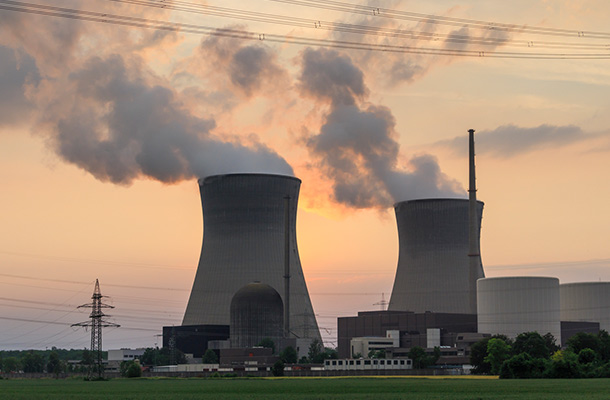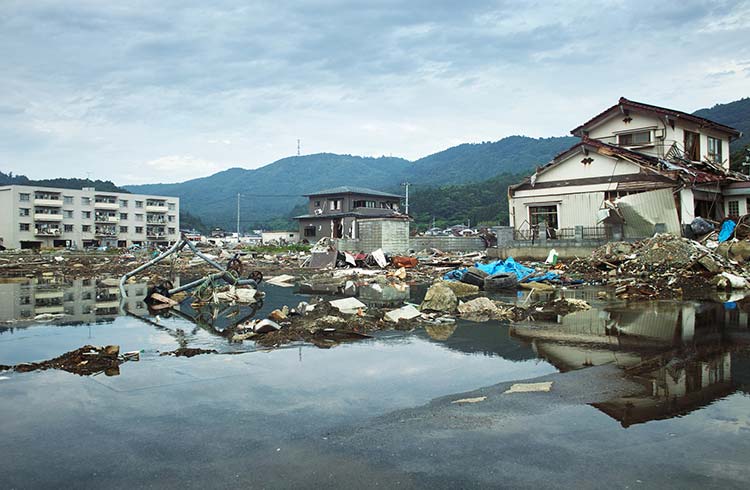How Dangerous is Radiation in Japan After the 2011 Tsunami?
Since the 2011 earthquake and tsunami in Fukushima in Japan, is there still a danger of radiation?
 Photo © iStock/were1962
Photo © iStock/were1962
In 2011, Japan suffered one of the most multi-faceted natural disasters in modern history, which involved a massive earthquake, multiple deadly tsunamis, and a nuclear meltdown. That nuclear catastrophe is still affecting the country, but are tourists at risk from radiation, which can cause cancer and stunt child development? So, is it safe to go to Japan? In January 2015, we published a short, animated video that tried to put people's fears in perspective.
- How did Japan's nuclear accident happen?
- What is Fukushima like now?
- Can travelers safely visit Fukushima?
- How high is the radiation risk in the rest of Japan?
How did Japan's nuclear accident happen?
On March 11, 2011, the fourth-strongest earthquake in the world’s recorded history struck 80mi east of Sendai city, on the east coast of Japan in Fukushima Prefecture. The giant quake triggered some of the most destructive tsunamis the planet has witnessed.
Measuring up to 50 feet tall, monstrous waves inundated coastal areas, causing extraordinary levels of damage to dozens of towns and cities, and killing almost 20,000 people. They were so powerful they not only reached up to 6mi inland, but they destroyed thousands of buildings.
Among the structures badly damaged by these walls of water was the Fukushima Daiichi Nuclear Power Plant. Oddly, in a country that has a wretched history of earthquakes and tsunamis, this huge nuclear plant was built next to the ocean. So, when the tsunamis reached Fukushima, they smashed into this hazardous facility.
The largest of these waves went over the nuclear plant’s defensive sea wall and swamped the facility. Although the nuclear reactors were automatically shut down when the earthquake was detected, emergency generators were needed to help cool the plant’s cores - the locations where nuclear reactions occur and extreme heat is created.
These crucial emergency generators were shut down by the tsunami so, despite the best efforts of the plant’s employees, its reactors overheated. This resulted in the cores melting. Soon, harmful radioactive material was seeping into the surrounding land, air, and sea, forcing the evacuation of at least 200,000 people from nearby towns and villages.
What is Fukushima like now?
After the meltdown, the Japanese Government not only evacuated hundreds of thousands of people but also set up a big exclusion zone around the nuclear plant. People were instructed not to step inside this area, which was 20km in radius.
In recent years that exclusion zone has gradually decreased in size, yet few of the former residents of these areas have returned, according to the Royal Geographical Society. In late 2021, the RGS reported that in some villages inside former exclusion zones, only one-third of the inhabitants had returned, and the majority of those were elderly people.
Meanwhile, the power plant is still hazardous and will remain so for at least 40 years until the clean-up process is finished, according to Japanese authorities. It houses about 1,000 tanks filled with radioactive sea water, and Japan has already spent more than 3 billion removing nuclear waste from the facility.
Can travelers safely visit Fukushima?
There is still a sizeable exclusion zone around the Fukushima plant. Visitors can only legally enter this area as members of day tours conducted by government-approved organizations, such as Real Fukushima. Tour participants must wear personal protective masks and suits while inside the exclusion zone on these five-hour tours, which visit towns and natural locations that were badly damaged by the tsunami.
The levels of radiation directly surrounding the plant remain high enough that, exposure for even just one full day (without wearing personal protective equipment), could harm a human’s health. However, the current exclusion zone covers only a tiny portion of this prefecture, the remainder of which is perfectly safe for tourists to visit.
How high is the radiation risk in the rest of Japan?
The average radiation exposure for the entire Japanese population, due to the Fukushima disaster, was as low as 1/10th of that experienced by the entire European population due to the 1986 Chernobyl meltdown. That’s the finding of a 2022 report by the United Nations Scientific Committee on the Effects of Atomic Radiation (UNSCEAR). That study stated that, since its last assessment of Fukushima in 2013, there had been “no adverse health effects among Fukushima Prefecture residents…directly attributable to radiation exposure”.
Tourists to Japan, then, need not worry about radiation exposure. Even permanent residents of the prefecture where the meltdown occurred do not appear to be harmed by radiation. All of Japan’s major tourist destinations – Tokyo, Kyoto, Osaka, Nagoya, Hiroshima, Kobe, Hokkaido and Okinawa – are more than 150mi away from the exclusion zone. In reality, the far bigger threats to tourists in Japan are the twin causes of the Fukushima meltdown – a major earthquake and resulting tsunami.
Related articles
Simple and flexible travel insurance
You can buy at home or while traveling, and claim online from anywhere in the world. With 150+ adventure activities covered and 24/7 emergency assistance.
Get a quoteComments have been disabled for this content.


7 Comments
Great article. People, you won't get cancer. You won't get it from your microwave, you won't get it from Fukishima, you won't get it from solar panels. Believe the well researched article and avoid comments from people who don't study radiation, work with radiation, who don't have science backgrounds or educations in nuclear physics (the people constantly commenting as authorities on these types of stories). Thank you for the article! Good job!
There's nothing to worry about the water discharge, at least not if you aren't swimming in Fukushima Daiichi or eating anything from the surroindings. You can check the radiation levels in the Pacific quite easily in web sites like:
http://ourradioactiveocean.org/results.html
Actually, radioactive levels in the Pacific from Fukushima are around 1-2 Bq/m3, very much lower than the 13000 Bq/m3 that the Earth seas naturally have.
(Of course, things are not so easy. They look for the caesium, which is by now the most dangerous radioisotope but not for other isotopes. Also, not all the caesium comes from Fukushima, there's quite a bit that comes from nuclear testing. Third, caesium bioaccumulates. Fourth, you have to consider the energy that emits the isotope.)
Japanese sea and landfood is being regulary tested. Even there a very small proportion of it surpasses the legal limits. So, I don't worry about what I eat thousands of kilometers away. It's not a lie, it's science.
I agree with James Williams and Marissa. This nuclear crisis is currently a grave concern to many people throughout the world and the catastrophe will continue to escalate. For years, the Japanese government has purposely covered up the information on extremely high levels of radiation at Fukushima and lied that there is nothing to worry about this issue. Even though the Japanese government knew about the disaster in the very beginning, they didn't reveal the truth about it to the public because they feared the panic of everything. Do you think this is right? It sounds terrifying to me. According to one of the articles from International Business Times, Abe has stated, ”It has never done and will never do any damage to Tokyo. It poses no problem whatsoever. … There are no health-related problems until now, nor will there be in the future. I make the statement to you in the most emphatic and unequivocal way.” Only now can we found out that this is completely not right and we see the lies of the Japanese government from the detrimental impacts and consequences that recently began to appear.
After two and a half years, which was in the year of 2013, Japan has asked the world for help in which I think it was too late because huge amounts of radiation has already poured out and has not only affected Japan, but other parts of the world. All we want is just the actual truth about this global disaster with more authentic information released about it. Not continuous lies that will affect many lives worldwide and the future generations.
The nuclear crisis in Japan brings devastating ecological effects and negative consequences to human health. It causes emotional, social and other health effects to us human beings. Extreme doses of radiation increases higher risks of cancer and other severe illness, such as brain damage and other syndromes. There have been discoveries on radiation contamination in food and water in Japan, America, and several other countries. It has actually influenced numerous people in Japan and surrounding countries, but the Japanese government is not even paying attention, as if nothing has happened. With the denial of the government and ongoing nuclear crisis in Japan, our world is possibly going to be chaotic where plants would look like huge flowers with gigantic stems and disfigured fish of five eyes and no fins. We all know that radiation is a scary thing because it is invisible. From all the events that have occurred, I personally would not want to live in a country like Japan.
I would say the Japanese government should really release more data on the risks of possible radiation exposures and form evacuation plans and other measures, despite the fear of the public. The more the government tries to withhold and cover up the information of the disaster, the more it will increase public distrust and concerns, and there will be obvious impacts on our environment.
I appreciated the article. I am a radiation protection specialist and the main theme I see in the posts following the article is fear and misinformation. Radiation is not a very powerful carcinogen. For example, I live in Colorado and we receive roughly twice the natural background radiation that most residents of the US receive. Yet, our cancer rates tend to be among the lowest in the country. If radiation is that bad, how can that be? I would chalk it up to the healthier lifestyle, lower obesity rates, more outdoor recreation, and lower rates of smoking. So, those characteristics are more important to cancer induction than the increased radiation exposure.
Ironically people fear exposure to radiation yet the they ignore the toxic, sugar and chemicals in process and gmo food they consume by the hour which also increases their chance of cancer and diseases. Another way to see this is, most of us are already setting ourselves up for cancer 'locally' which is a far more serious problem then a short visit to Japan.
The Japanese govt released press statements that everything was under control and fine... as the reactors were exploding!
They say it's fine to drink their desalinated water, eat their sushi and veggies. An idiot even claims that sea radiation is lower around Fukushima than in the world's seas.
If you believe this, then go to Japan and bring your kids too because you deserve it! Make sure you stuff yourselves with sushi with yummy sea weed and drink plenty of water to wash it down.
There are a lot of places in the world that you can visit. But if you want to visit Japan then do it. If you don't want to then don't. :)